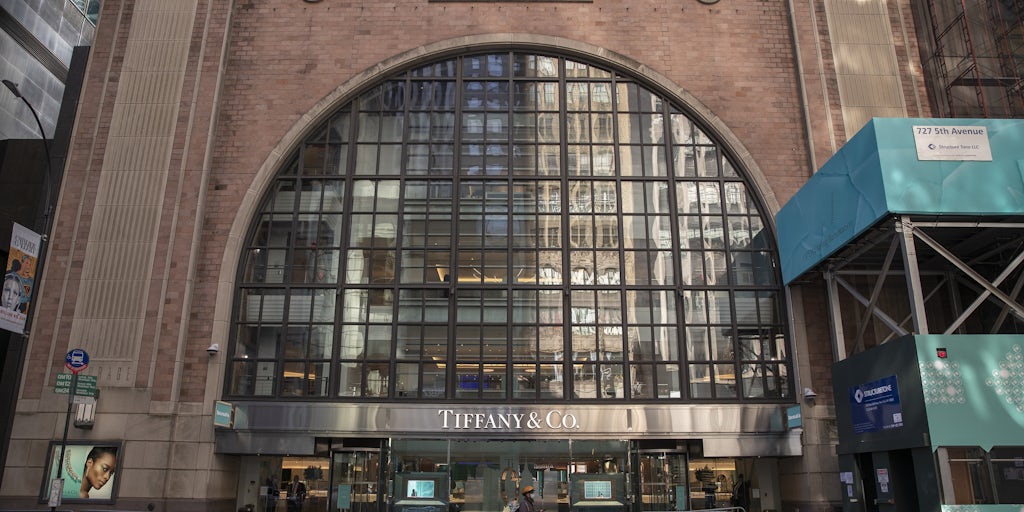British Retailer Next Sees Customers Swapping ‘Volume for Quality’ – WWD
LONDON — Could retail price inflation help make the planet greener by nudging people to buy less?
Next plc, the British high-street retailer and digital marketplace, said it has been seeing a change in the way customers shop, although it remains to be seen how much inflationary pressures will shape consumer habits in the months to come.
In a bullish holiday trading update and outlook for fiscal 2022-23 year, Next said due to rising supply chain, transport and labor costs, it plans to raise prices across its fashion and homeware brand portfolio in the new fiscal year that begins on Feb. 1.
Prices of Next merchandise will rise more than 3.7 percent in the first half, and more than 6 percent in the second six months of the year.
Next sells fashion and homeware via its own physical stores, and also distributes scores of men’s and women’s fashion, fragrance and skin care brands through the Next marketplace.
It has exclusive distribution deals with brands including Victoria’s Secret, Gap and Laura Ashley home. Last year Next took a 25 percent stake in the British fashion retailer Reiss, and invested alongside Peter Williams in the relaunch of the Aubin men’s wear label, formerly part of the Jack Wills brand.
In 2019, Next broke into the multibrand beauty business, acquiring the Fabled by Marie Claire premium retailer.
In Thursday’s statement, the company said inflation would play a starring role in 2022.
The company pointed to the “unanticipated persistence” of higher freight rates into the second half of the coming fiscal year, along with some further increases in manufacturing costs.
Next said it was experiencing increases in U.K. operating costs, mainly resulting from wage inflation and labor shortages in sectors such as warehousing and technology.
The Next flagship on Oxford Street in London.
Courtesy Image
While inflation may be biting, Next said it was confident about lifting its own retail prices even higher than the U.K. average because it is seeing that customers are “choosing to buy slightly fewer items, but at moderately higher price points — perhaps exchanging volume for quality.”
Next also noted that inventory for the end-of-season sale was down 18 percent versus two years ago, which it said was mainly the result of better-than-expected full-price sales in the period.
While the “buy-less-but-better” chant is common among designer brands, rental platforms and eco consultancies, it is rarely heard at the levels of the mass market, high street and fast fashion. Those big retailers need to sell quickly, in high volumes, in order to remain profitable.
Next plc acknowledged that forecasting sales trends for the year ahead was unusually difficult, and the “buoyancy” of recent months has made it all the harder.
It said there are many unknowns. Assuming no further disruption from COVID-19, Next said it remains unclear how rising inflation, and other macro pressures on consumers, will impact future shopping habits.
In its trading update, the company said it still doesn’t know whether the post-COVID-19 return to spending on overseas holidays and other social activities will depress demand for discretionary goods, or whether existing inflation in essential goods and services, and rising mortgage rates, will reduce discretionary spending on clothing and homeware.
Next even wondered whether its own 6 percent-plus price hike in the second half would depress demand for its products — or encourage people to shop differently. The company simply said it is expecting “a tougher environment as we move through next year.”
While Next and other high-street retailers might be staring into a cloud of question marks in 2022, the past months have proven to be a boon for the retailer, so good in fact that the company has raised its full-year profit guidance for fiscal 2021-22, with plans to hand out a special dividend of 1.60 pounds a share at the end of January.
The company said in the eight weeks ended Dec. 25, full-price sales were up 20 percent compared with the corresponding period two years ago.
As a result, full-price sales growth for the current fiscal year will now be 70 million pounds, or 12.8 percent, higher than Next’s previous guidance for the period.
The company has also increased its full-year profit before tax guidance by 22 million pounds to 822 million pounds, which is 9.8 percent higher than two years ago.
For fiscal 2022-23, which ends in January 2023, the company said it is expecting full-price sales to be up 7 percent versus the current year, and that profit before tax will be up 4.6 percent to 860 million pounds.
In addition to the special dividend, the company said it intends to return to its pre-pandemic ordinary dividend cycle in the year ahead.
Perhaps because of inflationary fears, and slower growth in the upcoming year, the share price declined during the day, and was down 3.3 percent to 77.70 pounds in late afternoon trading on Thursday. The shares closed down 3.6 percent at 77.50 pounds.
Hargreaves Lansdown, the financial services company, said Next’s pursuit of online, physical and marketplace retail was a winning formula.
Hargreaves said Next’s well-established online operations meant it was able to attract new customers over lockdowns, “and early signs suggest they’re sticking around.” It added that the marketplace represented “a lower-risk and high-return area of business, which could translate into an impressive long-term source of growth.”
It added that “Next looks pretty well set at present, with high customer retention, mushrooming online sales and growth opportunities. Something of a rarity in retail.”



:quality(70)/cloudfront-eu-central-1.images.arcpublishing.com/businessoffashion/Q3C5LV5IRZG6JAGPIUQRN72BLQ.jpg)


